About This Project
Unlike most chimpanzee habitats, the Toro-Semliki Wildlife Reserve is a diverse mosaic of grassland, woodland, and swamp. The most ideal chimpanzee habitat lies in two narrow corridors of riverine forest that stretch across this mosaic. I collected DNA samples from the chimpanzees that live there to better understand through DNA analysis how corridors facilitate or constrain chimpanzee gene flow. The results of this study will inform conservation strategies across east and central Africa.
Ask the Scientists
Join The DiscussionWhat is the context of this research?
The Toro-Semliki Wildlife Reserve is one of the oldest protected areas in Uganda. It comprises a large portion of the Murchison-Semliki landscape. This region is home to several different chimpanzee populations under threat of extinction. Between 2000 and 2006 alone the Wildlife Conservation Society (WCS) estimated that 308 km2 of forest had been lost to human encroachment. The WCS proposed the use of corridors to maintain gene flow between chimpanzee populations in this region. Their proposal includes corridors in Semliki that extend outward to form connective passageways across the Albertine Rift Valley and beyond. While conservation plans depend on chimpanzee migration to/from Semliki, no baseline census of Semliki chimpanzees exists.
What is the significance of this project?
Chimpanzees were labeled as endangered in 1996. This project aims to inform efforts to halt this decline by giving chimpanzees a means of safe travel between protected areas, even as humans continue to spread across the landscape. Connectivity is likely more manageable and sustainable than more traditional strategies like the formation of large reserves and parks. In theory, it will be better for the health and reproduction of chimpanzees. Still, we do not yet know how chimpanzee social organization may adapt to regular travel and foraging through corridors. Corridor structure likely constrains population density, community divisions, and migration in unique ways. This project aims to examine those features in a population that has already adapted to life in rainforest corridors.
What are the goals of the project?
DNA will be used to answer the following questions: First, how many chimpanzees live in the reserve? This will provide a baseline for conservation efforts, so data will be shared with WCS. Corridors present additional constraints by increasing the ratio of boundary to territory size. This is important, because males defend community boundaries with lethal aggression. Thus, genetic data will be used to examine community divisions. Finally, genetic diversity will be measured to understand migration and sustainability of the Semliki chimpanzees. Results will be submitted to academic journals and converted into my PhD dissertation. You will watch me uncover answers in real-time lab notes. I will later present results at Pittsburgh Zoo and at academic conferences.
Budget
DNA will be extracted with kits, but many samples will not be usable. So the concentration of chimpanzee DNA will be measured. qPCR allows me to target a gene and measure its copy number, so only quality samples are used. Chimpanzees will be identified by short repeated sequences called STRs. The number of repeats at each locus will be used to distinguish individuals. It also will reveal kinship and genetic diversity. Sex will be identified in each individual using the amelogenin allele, because it is shorter on the X chromosome than the Y (females = XX, males = XY). STRs on the Y-chromosome will be genotyped in male samples. If time and funds allow, a portion of the genome in the mitochondria will be sequenced. While all chimpanzees carry mtDNA, they only inherit it from their mother, making it useful for mapping historical migration. It is cheaper and easier to sequence (though less informative) than nuclear DNA. Your donation will fund the supplies listed for these methods.
Endorsed by
Meet the Team
Alicia Rich
Twenty-two years ago I sat wide-eyed and cross-legged while I listened to my second grade teacher read us a book about a primatologist. My teacher probably had no idea that she would instill a fascination that guided and consumed my career from that day forward.
As a teenager and undergraduate I spent many years working at the Pittsburgh Zoo and PPG Aquarium, which led me to some great opportunities to study primates in captivity as well as in the wild in both Costa Rica and Kenya.
Now, as a Ph.D. Candidate in Anthropology, I spend my days in a genetics lab at Indiana University, where I study the chimpanzee molecular ecology.
I feel lucky to be working in an area that has allowed me to accumulate a total of 20 months of field research (18 in rural Africa) as well as laboratory experience analyzing DNA. I’m always looking for projects that can combine my interests in human evolution, conservation biology, and health/disease.
In my spare time I’m also a competitive ultrarunner.
Additional Information
Rewards!
I aim to use this fund-raising project to foster more involvement between researchers and their community. When donors feel like a part of the research process, everyone benefits. Thus, I have come up with a few ideas to let you know how much I appreciate your support.
First, all donors will have access to special features on this page. That includes laboratory notes, which will be both written prose as well as short videos demonstrating what I do in the lab.
Next, Caroline Deimel has been kind enough to offer unlimited use of her beautiful photographs of the Semliki chimpanzees (see a selection below). Thus, I will be mailing prints of her photos along with customized notes as a personal thank you for donations of $25 or more. You may chose from any of the photos that you see in this video (and many others!). Just send me a note if there is one that you'd prefer and give me some extra time to print it.
Finally, I want to bring my science to you! Caro and I designed a program called "Poop Science" for children of all ages. The presentation teaches children about primate research and the innovative methods that researchers use. Then they are given a chance to try some hands on methods by sifting (fake!) chimpanzee dung for (fake!) evidence of feeding. I will make this program available to significant donors within the Indianapolis or Pittsburgh region. I can also bring presentations catered to adult audiences (they don't have to sift the poop). Contact me for a helpful flyer on the Poop Science program as well as links to example Prezi presentations that I have used.
So here is the specific breakdown:
Donations of $25: 4x6 chimpanzee print.
Donations of $50: 8x10 chimpanzee print.
Donations of $100: 18x24 poster of a Semliki chimpanzee.
Donations of $200: I bring the science to you for customized presentations!
I'm also willing to discuss other rewards or ways of making you feel more engaged with this project, so reach out through email if you'd like to get in touch: amrich@indiana.edu.
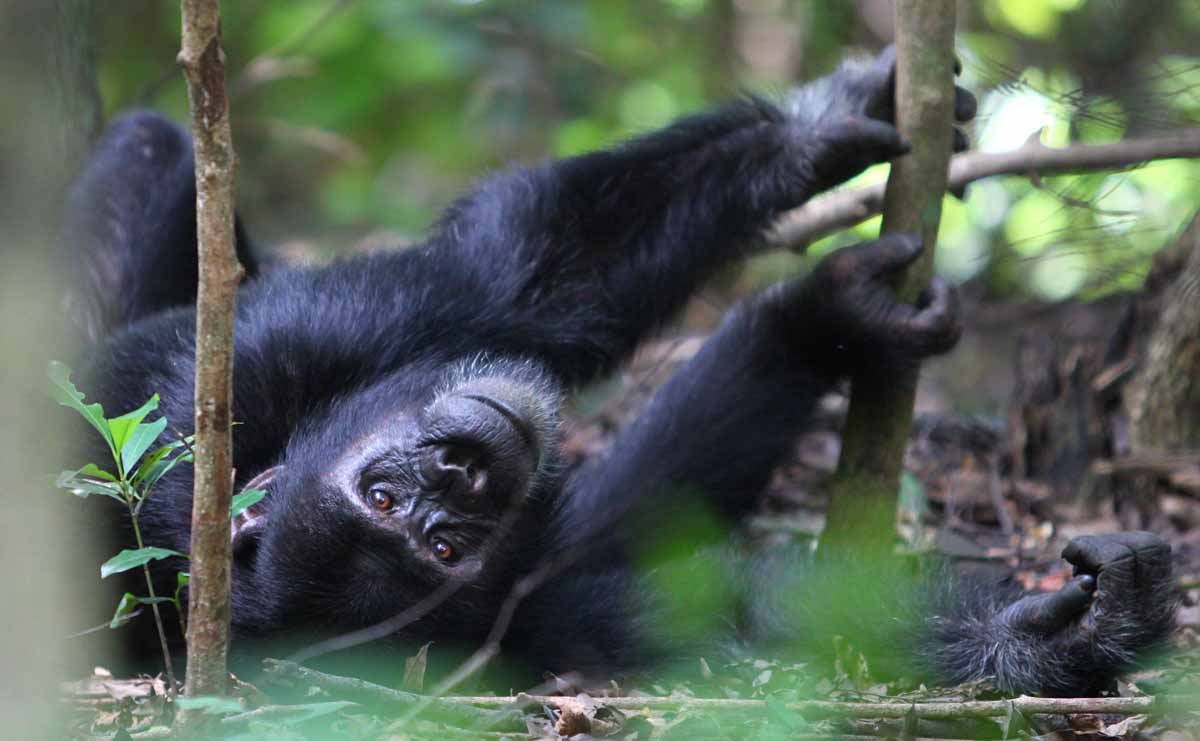
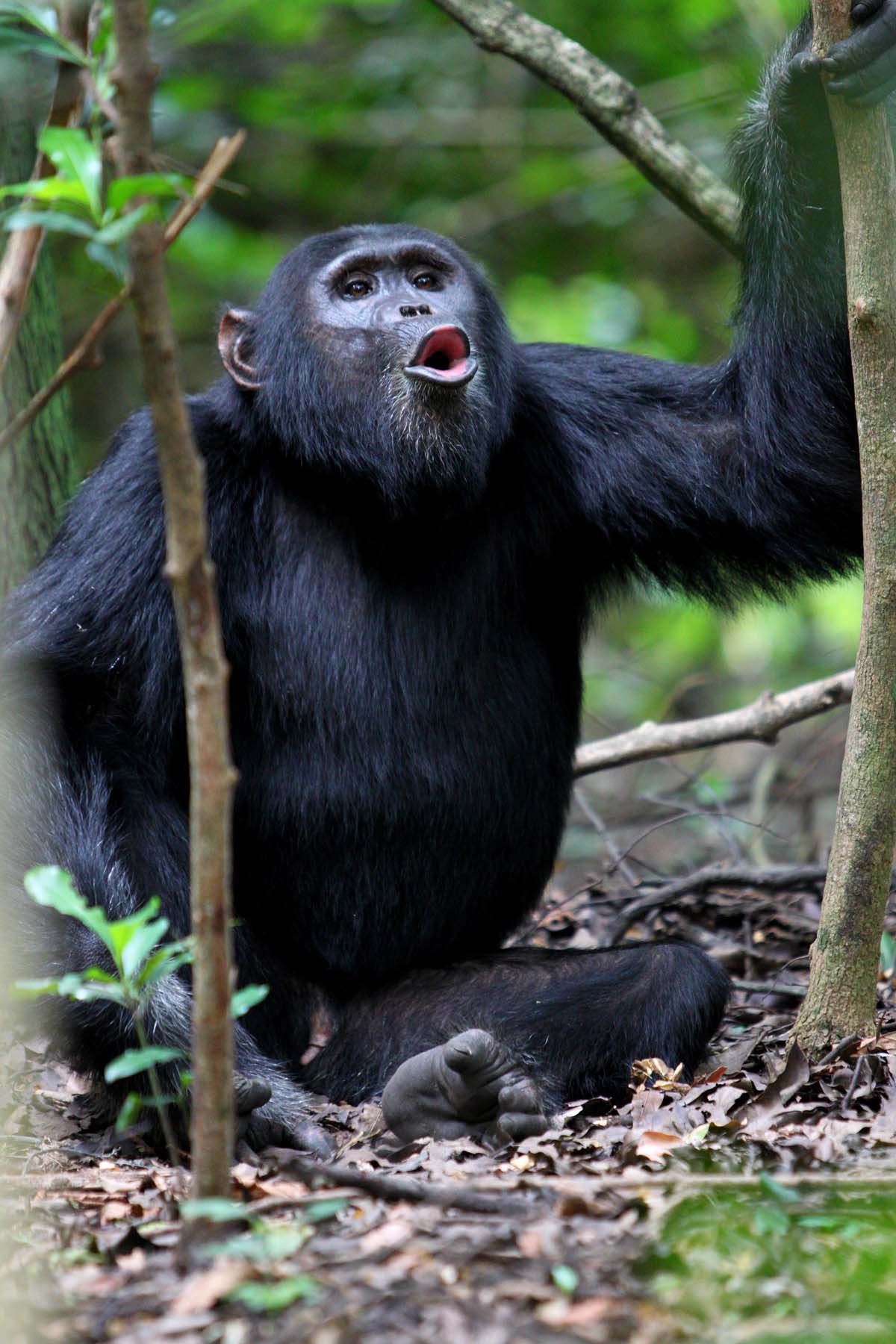
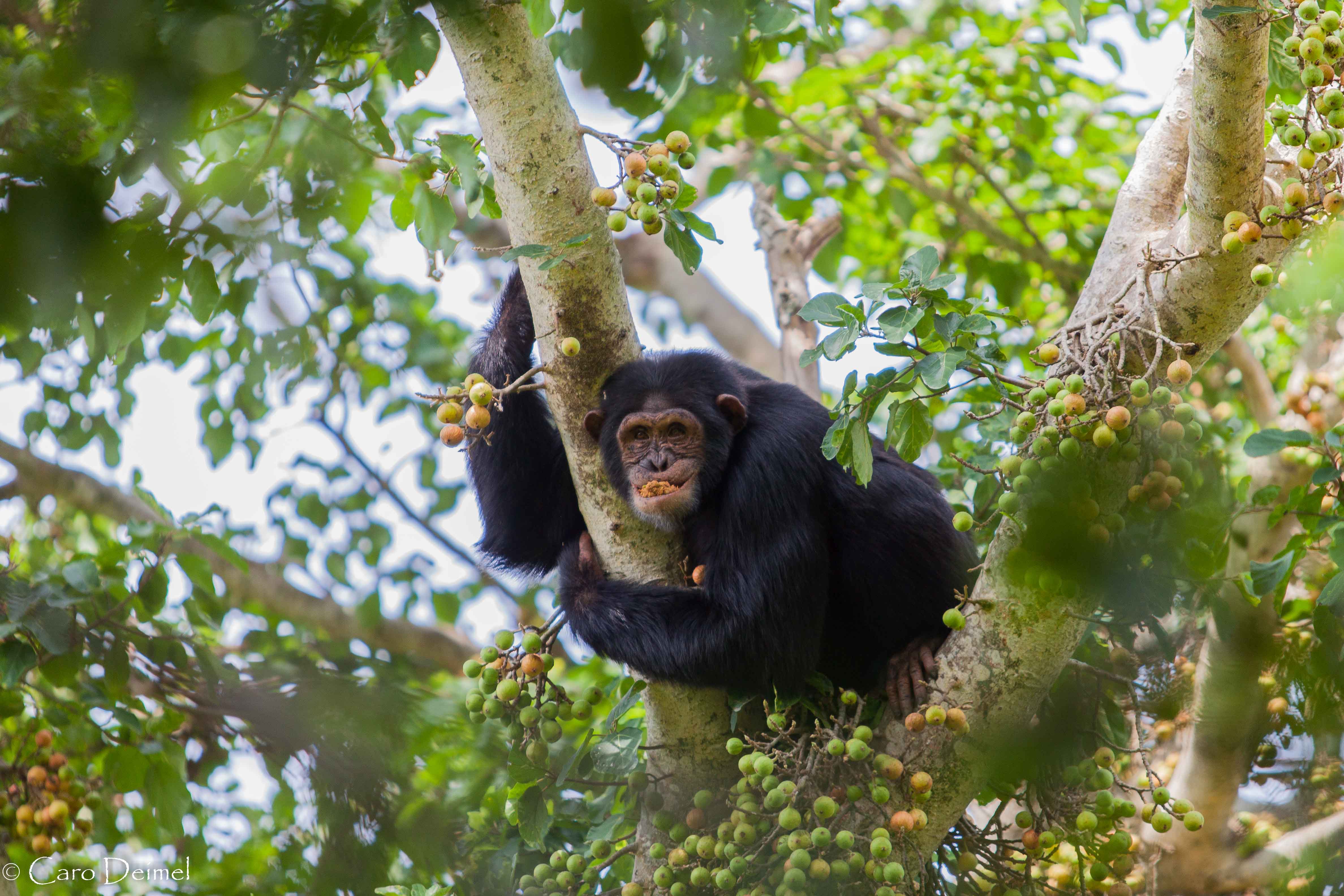
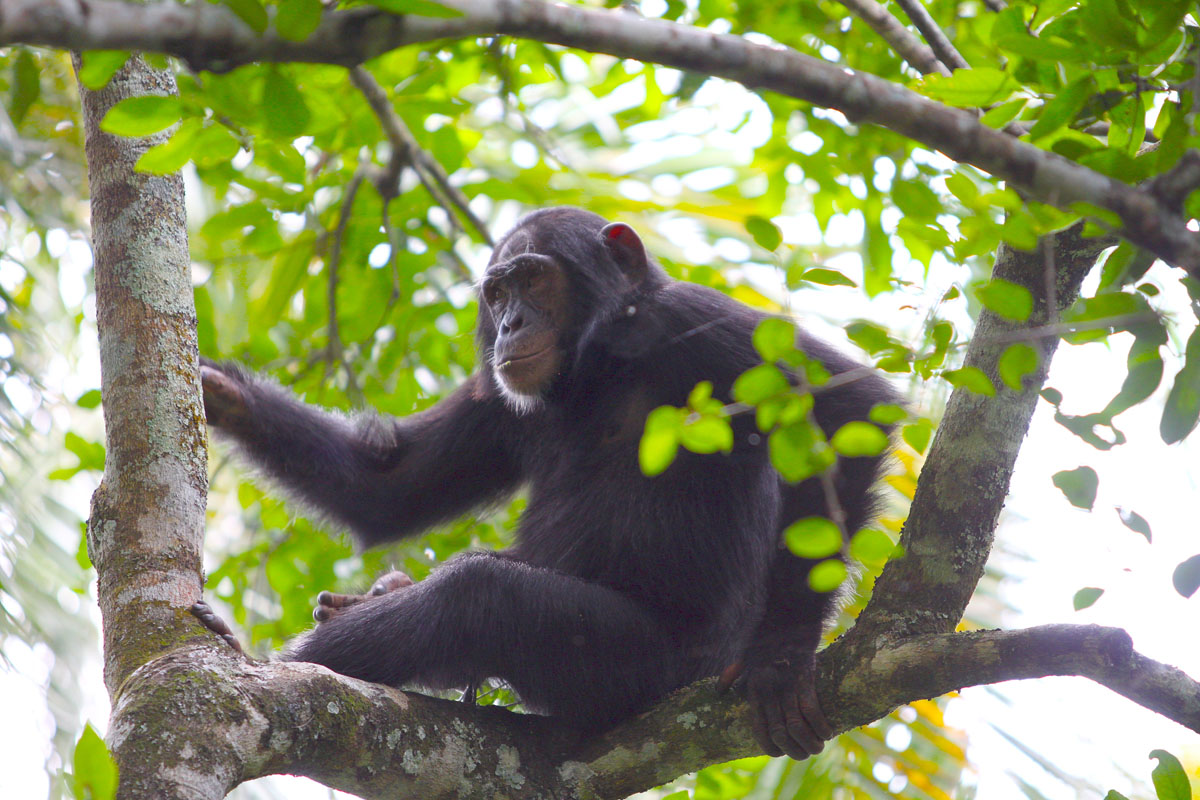
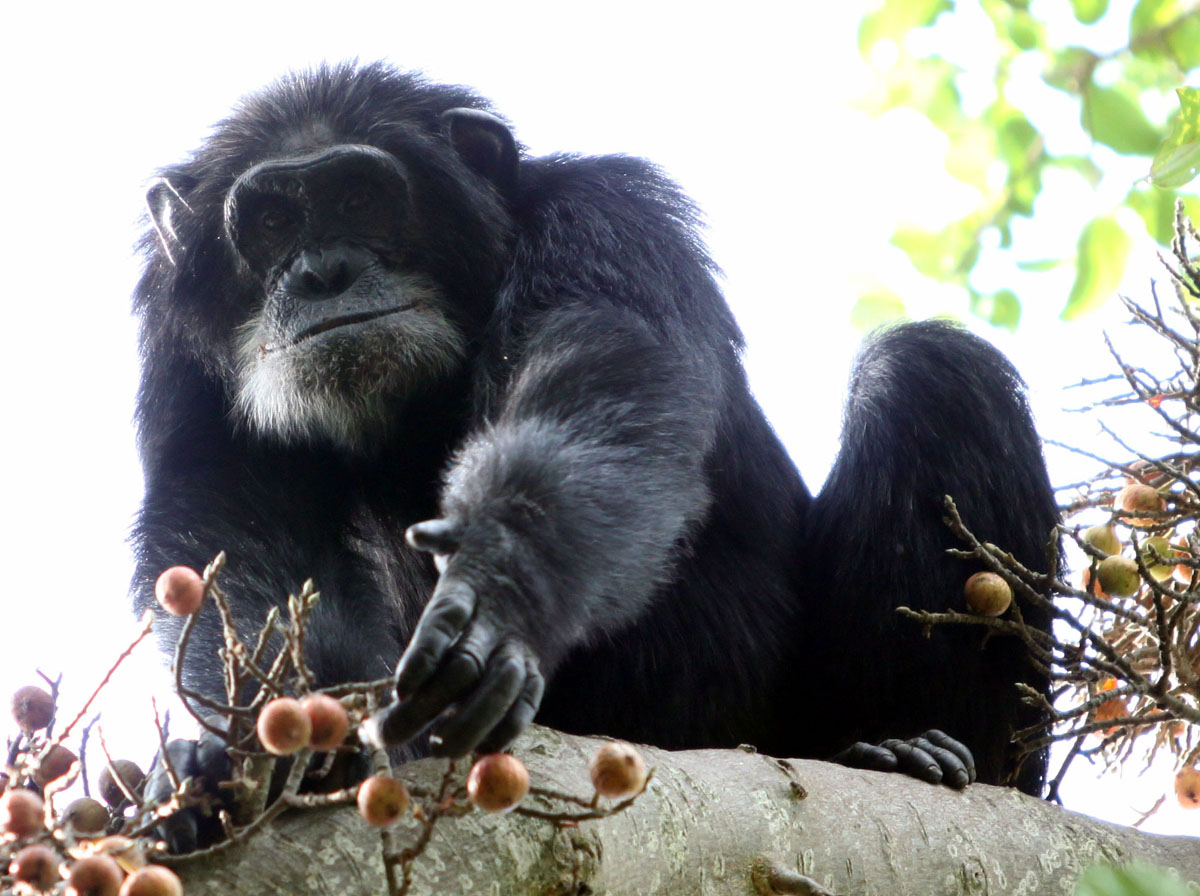
Selected References:
Akwetaireho, S., Plumptre, A. J., & Nangendo, G. (2010, February). Assessment of corridors in the Murchison-Semliki Landscape. Wildlife Conservation Society.
Arandjelovic, M., Head, J., Rabanal, L. I., Schubert, G., Mettke, E., Boesch, C., … Vigilant, L. (2011). Non-Invasive Genetic Monitoring of Wild Central Chimpanzees. PLoS ONE, 6(3), e14761. http://doi.org/10.1371/journal...
Baldwin, P. j., McGrew, W. c., & Tutin, C. e. g. (1982). Wide-ranging chimpanzees at Mt. Assirik, Senegal. International Journal of Primatology, 3(4), 367–385. http://doi.org/10.1007/BF02693...
Basabose, A. K., Inoue, E., Kamungu, S., Murhabale, B., Akomo-Okoue, E.-F., & Yamagiwa, J. (2015). Estimation of Chimpanzee Community Size and Genetic Diversity in Kahuzi-Biega National Park, Democratic Republic of Congo. American Journal of Primatology, 77(9), 1015–1025. http://doi.org/10.1002/ajp.224...
Chancellor, R. L., Langergraber, K., Ramirez, S., Rundus, A. S., & Vigilant, L. (2012). Genetic Sampling of Unhabituated Chimpanzees (Pan troglodytes schweinfurthii) in Gishwati Forest Reserve, an Isolated Forest Fragment in Western Rwanda. International Journal of Primatology, (2), 479. http://doi.org/10.1007/s10764-012-9591-6)
Fedigan, L. M. (2010). Ethical issues faced by field primatologists: asking the relevant questions. American Journal of Primatology, 72(9), 754–771. http://doi.org/10.1002/ajp.208...
Gruen, L. ( 1 ), Fultz, A., & Pruetz, J. ( 3 ). (2013). Ethical issues in african great ape field studies. ILAR Journal, 54(1), 24–32. http://doi.org/10.1093/ilar/il...
Hunt, K. D., & McGrew, W. C. (2002). Chimpanzees in the dry habitats of Assirik, Senegal and Semliki Wildlife Reserve, Uganda. In C. Boesch & G. Hohmann (Eds.) (pp. 35–51). Cambridge, Cambridge University Press.
Miller, C. R., Joyce, P., & Waits, L. P. (2005). A new method for estimating the size of small populations from genetic mark–recapture data. Molecular Ecology, 14(7), 1991–2005. http://doi.org/10.1111/j.1365-...
Moore, D. L., Langergraber, K. E., & Vigilant, L. (2015). Genetic Analyses Suggest Male Philopatry and Territoriality in Savanna-Woodland Chimpanzees (Pan troglodytes schweinfurthii) of Ugalla, Tanzania. International Journal of Primatology, 36(2), 377–397. http://doi.org/10.1007/s10764-...
Moore, D. L., & Vigilant, L. (2013). Genetic diversity at the edge: comparative assessment of Y-chromosome and autosomal diversity in eastern chimpanzees (Pan troglodytes schweinfurthii) of Ugalla, Tanzania. Conservation Genetics, 15(3), 495 – 507. http://doi.org/10.1007/s10592-...
Moore, D. L., & Vigilant, L. (2014). A population estimate of chimpanzees ( Pan troglodytes schweinfurthii ) in the Ugalla region using standard and spatially explicit genetic capture-recapture methods: Population Estimate of Ugalla Chimpanzees. American Journal of Primatology, 76(4), 335–346. http://doi.org/10.1002/ajp.222...
Morin, P. A., Chambers, K. E., Boesch, C., & Vigilant, L. (2001). Quantitative polymerase chain reaction analysis of DNA from noninvasive samples for accurate microsatellite genotyping of wild chimpanzees (Pan troglodytes verus). Molecular Ecology, 10(7), 1835–1844. http://doi.org/10.1046/j.0962-...
Nsubuga, A. M., Robbins, M. M., Roeder, A. D., Morin, P. A., Boesch, C., & Vigilant, L. (2004). Factors affecting the amount of genomic DNA extracted from ape faeces and the identification of an improved sample storage method. Molecular Ecology, 13(7), 2089–2094. http://doi.org/10.1111/j.1365-...
Pruetz, J. D. (2007). Evidence of cave use by savanna chimpanzees (Pan troglodytes verus) at Fongoli, Senegal: implications for thermoregulatory behavior. Primates, (4), 316.
Pruetz, J. D., & Bertolani, P. (2007). Savanna Chimpanzees, Pan troglodytes verus, Hunt with Tools. Current Biology, (5), 412. http://doi.org/10.1016/j.cub.2...
Samson, D. R., & Hunt, K. D. (2014). Chimpanzees preferentially select sleeping platform construction tree species with biomechanical properties that yield stable, firm, but compliant nests. PLoS ONE, (4).
Webster, T. H., McGrew, W. C., Marchant, L. F., Payne, C. L. R., & Hunt, K. D. (2014). Selective insectivory at Toro-Semliki, Uganda: Comparative analyses suggest no “savanna” chimpanzee pattern. Journal of Human Evolution, 71, 20–27. http://doi.org/10.1016/j.jhevo...
Project Backers
- 41Backers
- 74%Funded
- $4,400Total Donations
- $107.32Average Donation

